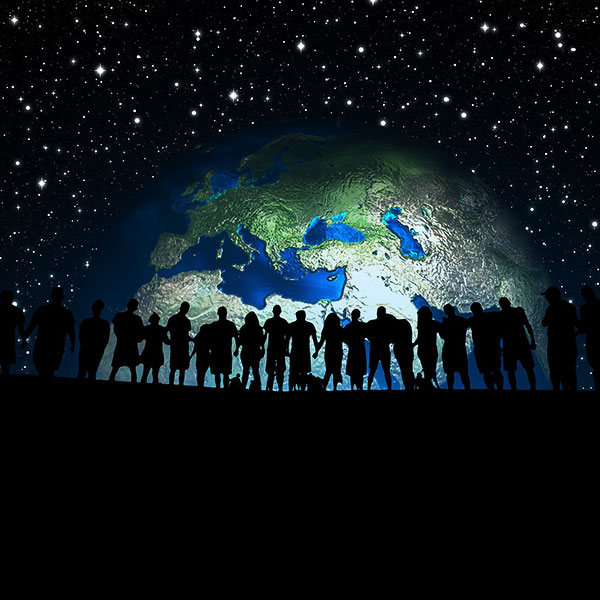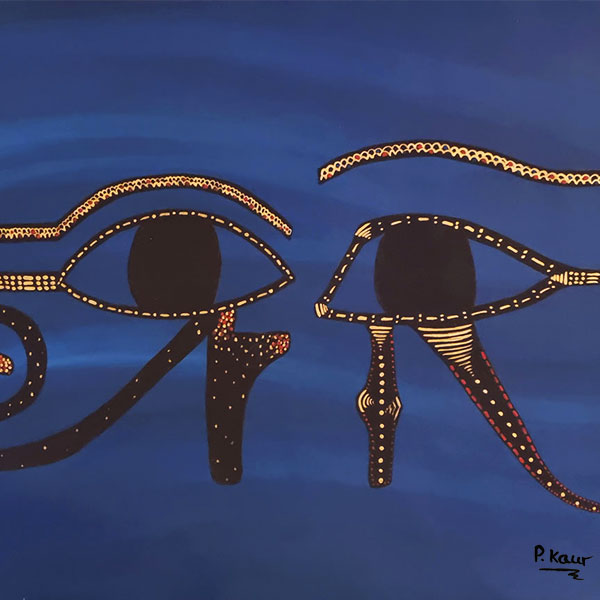This is mine. No, it’s mine. Such a classic childish conversation and yet in adult terminology, it translates to: this is my country, this is my religion, these are my beliefs, I am right, let’s fight over it. Children may fight over a toy and then walk away. Adults will fight to the literal death over the idea of what people own, what they feel they are entitled to and wealth that has been accumulated.
This part of the human condition can be traced back a long time into evolutionary history. It is essentially based on the fight for survival – territory for food and shelter. It begins with the need for nutrients, learning and becoming aware of what is good for the individual, where it is and the fact that it is scarce and needs protecting.
Awareness and Consciousness
Consciousness is notoriously difficult to define. We can think of it as awareness of one’s self. Many species are aware of themselves to some degree. Being aware means a level of understanding that you are an individual, you feel sensations of pain or pleasure and will seek to avoid the former and embrace the latter. This comes down to the inherent need first and foremost, to survive.
Evolutionary speaking, it favours the individual to be somewhat aware that this object or food stuff is causing me pain so I must avoid it. Or this predator is chasing me to harm and kill me so I must be aware of this to avoid it and survive. Awareness increased across species as time went on, to become more aware of themselves and the surroundings, to take in more information of the habitat and the dangers it possesses through the various senses. As species increased in number, evolving and filling different niches in various habitats, so did the food sources and dangers increase, triggering the response to become territorial.
Social Groups
Some species have developed into highly sophisticated social structures. This undoubtedly is an evolutionary advantage as socially adept species are known to be more intelligent generally. Individuals can benefit from things that the group provides that they couldn’t get on their own.
Awareness increases with social species as the individual needs to aware of not just themselves, but of other individuals and how the social structure works, and their place in it. A lot of this is automatic behaviour, hardwired into the genetics of various species. Even then, a certain level of awareness is required for it to function.
Territory in the Wild
Many species have evolved to become territorial of the land they occupy and live in. Survival and reproduction kicks in and being territorial is the difference between life and death in many cases.
Lions, wolves, birds, primates, insects and lizards show many signs of being territorial. They each have their own ways of protecting their land and their families from outside intervention. In many cases, individuals will kill other individuals of the same species of a neighbouring tribe, when they encroach too far into each other’s territories (sounds somewhat familiar).
Some species of primates alongside elephants and dolphins show the opposite behaviour and can be observed to cooperate with neighbouring tribes rather than be threatened by them. In these circumstances, this has fostered survival much better than the fighting methodology.
Humanity
We stem from a line of species splitting from chimpanzees around 7 – 8 million years ago. Over the last 7 million years, various species of hominines have evolved. Within the Homo genus lies our species and our extinct ancestors. We began as hunter gatherers, moving around a large territory of space and living nomadic lifestyles. This lifestyle requires very few possessions, only what can be carried essentially. There are theories that hunter gatherers left behind the sick and elderly as they would have slowed them down and would have been considered ‘extra weight’.
While we cannot view ancient hunter gatherer in their natural habitat and observe their behaviours, there is evidence to suggest violence amongst our ancestors. The reason is unknown, but violent behaviour stems from aggression and some kind of threat. It could have been a threat over land and territory, or alpha competing with alpha for control of the group. We can see similar behaviour in chimpanzee communities, and we see similar behaviour in modern society.
Agriculture
It’s been remarked upon in various texts and schools of thought that agriculture was a major threshold for humanity, changing the way we live completely as did the industrial revolution and as we are living in, the technological and robotic revolution.
Humans are born prematurely and so the brain forms connections by taking in information from the environment the individual finds themselves in. The amount of information taken in and connections formed in the brain is immense, almost double of an adult brain. From around age 10, the brain will start to prune connections whilst still learning. It is in mid 20s, say 25 years old, that the brain has fully matured to its adult state, capable of more advanced cognitive function. And yet, within all these bespoke individual connections, lies more primitive and basic survival instincts.
Agriculture brings out the behaviour regarding territory and resources more. As nomadic peoples, resources were limited as to what could be carried and kept in personal possession. Agriculture and sedentary life go hand in hand. Farming produces more quantity of less variety, however the increased quantity is more important here. The surplus food that was produced encouraged population growth and a need to store and protect resources from various threats. This would be other humans and tribes, animals, pests, moulds and viruses.
The home became a thing in sedentary life. Where one would sleep and be with their family, it became more permanent and solid. It became a place to store resources and thus, a place that needed protecting. As the communities got bigger over time, people lived with strangers essentially. Hunter gatherer tribes were small and familial. It is said that a human can have personal connections with up to 150 people. This group size can operate without major hierarchal structures in place. When it gets over this, people live with strangers and the suspicions would increase as we are unable to personally know everyone and their intentions. The need to protect territory, resources and possessions simply increases.
These sedentary communities became epic centres, attracting more people and structures of hierarchy for the community to function, to resolve issues between strangers with common laws, rules, and religious practices. In the earlier days of civilisation, globalisation wasn’t a thing so when other communities encountered each other with their different foods, different rules and religion, it would have triggered the tribal response. Especially if certain communities were ‘wealthier’ than others, with more food surplus, more resources and other goods that needed protecting. And of course, outsiders would want to get their hands on them.
Modern Society
Today we are both highly territorial and welcoming of others. Some people can get antsy when a stranger parks over their driveway outside the home. Or notice strange people walking down the road who aren’t usually here. It is common for the youth to form gangs, sometimes within the structure of elder leaders, and marking their territory with postcodes or compass positions of north, east, west and south.
We do have the capability of welcoming new people into our communities, our residential areas and our social groups. However the trigger of protecting our territory and resources has more devastating effects and will focus more on that.
As society began to merge into a global system, people began crossing the world, encountering new people and customs. A lot of the time, new people are not welcome in native communities, they are inherently a strange and a threat.
As complex society develops and increases, so does the number of opportunities for this triggering response. Billions of people with millions of different ways of being, thinking and seeing the world, will naturally give rise to different groups, with their own versions of resources, possessions and wealth. The resources can also lie in arenas outside of small physical spaces like in a belief system, in shared group activity, in a deity or nationality: religion, skin colour, ethnicities, political view points, country of origin, disability, gender, sexual orientation, sports teams, professions, competing companies.
The shared beliefs and customs of a group are just as precious as physical resources of food in our triggering minds. We protect them and fight those who oppose us with vigour, some more than others. We are social creatures with the social group being an integral evolutionary part of our individual survival. Being apart from a social group triggers fear of separation, as it is a threat to our survival, potentially leading to harm and death.
The further we venture into the technological and information age, new forms of possessions are triggering us. Virtual money, likes and followers, exposure to new types of groups and communities that we otherwise wouldn’t have had contact with.
The online world also offers to many people what is difficult to obtain in the physical world – our own following, the chance to be at the top of a social group, the sought after alpha position. The alpha of an online social group wants to reward their audience, maintain contact with their audience, increase the size of their audience, and give value to their audience in order to maintain their position. While some people’s intentions are benign, some people get a kick from power and control and will fight against opposition and competition of the social group they have created and fostered.
The evolution of possession is a fascinating story, crossing many disciplines in today’s modern society and yet coming from a basic place of survival and the need for resources to survive. It seems that as our society gets more complex, coming up with new creations and innovations, it also creates new ways in which our basic human instincts and behaviours can be triggered.





